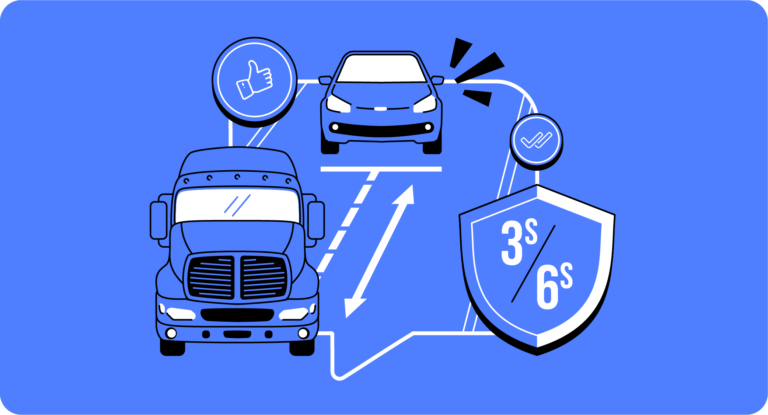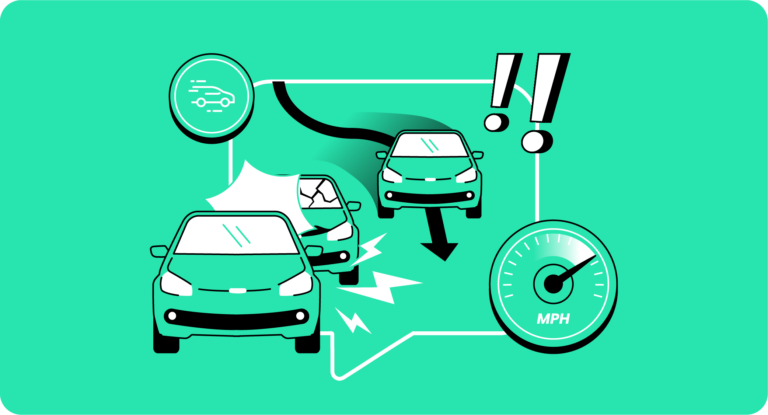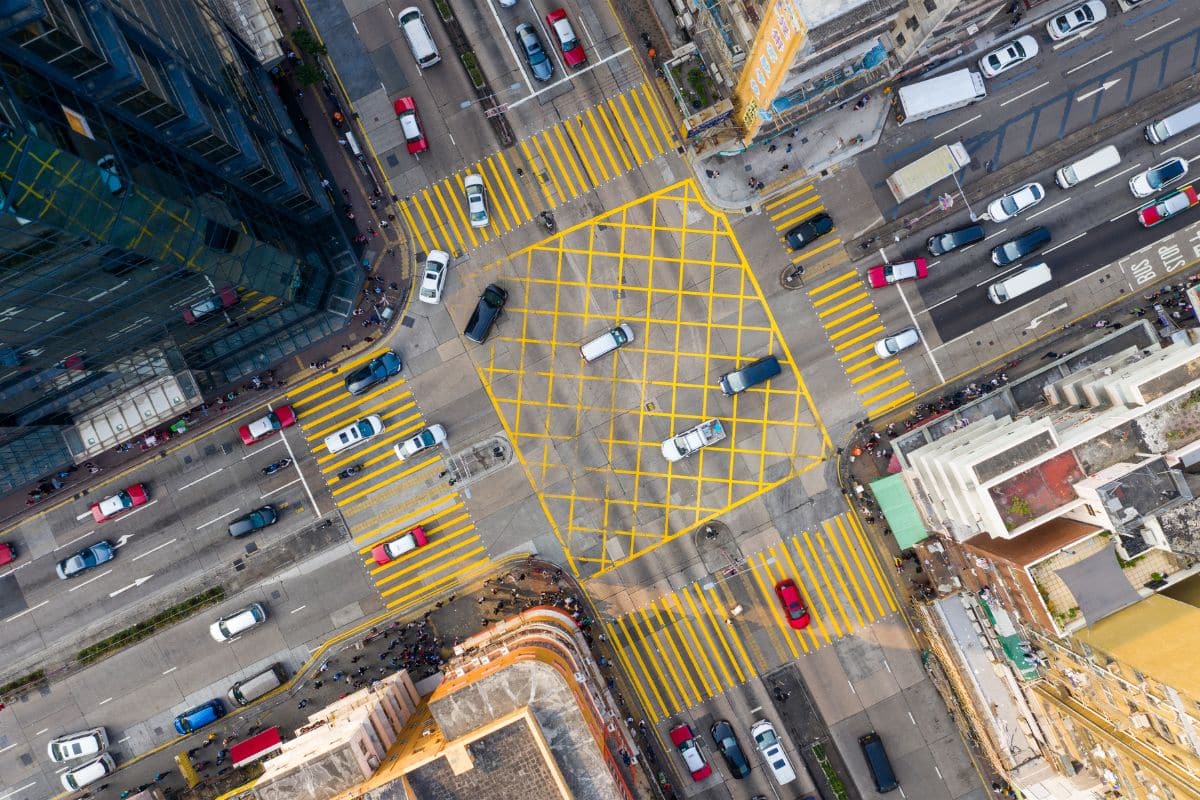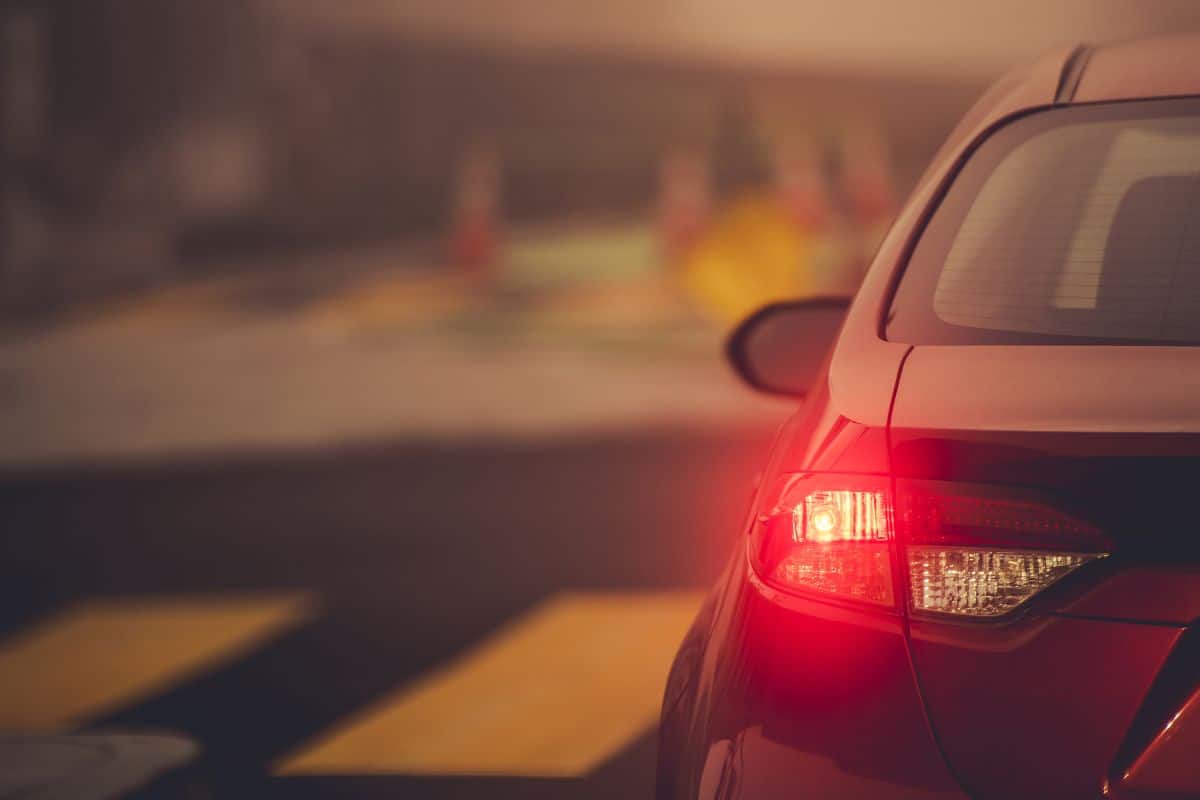Driving too closely behind large vehicles puts you at serious risk of a collision. With reduced visibility and longer stopping distances, large vehicles create unique hazards for nearby drivers. By increasing your following distance, you can help protect yourself from preventable car accidents and improve your safety on the road.
Why Following Distance Matters When Driving Behind a Large Vehicle
Limited visibility behind large vehicles significantly increases the risk of accidents. Trucks and buses have larger blind spots, making it harder for their drivers to see smaller vehicles following too closely. This lack of visibility can prevent large vehicle drivers from reacting to hazards or avoiding rear-end collisions.
Maintaining enough stopping distance is critical to reducing crash risks. Large vehicles require longer stopping distances, and if you are following too closely, you may not have enough time to brake if the truck or bus stops suddenly. Keeping a safe distance helps ensure you have time to react to unexpected situations and avoid rear-end collisions.
Tip
Always position your vehicle so you can see the truck’s side mirrors. If you cannot see the driver’s mirrors, they cannot see you, making it crucial to adjust your following distance.
Dangers of Driving Too Close to Large Vehicles
Driving too closely behind large vehicles puts you at risk of several hazards, including reduced reaction time, limited visibility, and difficulty seeing their braking signals. These dangers can lead to severe accidents and costly damages. By understanding the risks, you can take proactive steps to protect yourself and others on the road. Some of the biggest risks of tailgating large vehicles include:
- Blind spots – Large vehicles have extensive blind spots, commonly referred to as “no-zones” where drivers cannot see you. Staying too close increases the risk of being hit if the truck changes lanes or stops suddenly.
- Debris – Trucks can kick up rocks, dirt, or other debris, which may damage your windshield or block your view of the road ahead. Keeping a safe distance behind large trucks or buses can protect your vehicle from rock chips, windshield cracks, and other potentially catastrophic situations.
- Rollbacks – Most heavy vehicles utilize manual transmissions and may roll backward a noticeable distance on steep inclines when starting from a full stop. If you are stopped too close behind them, it can cause significant damage to your vehicle and put you in danger.
- Sudden braking – Large vehicles often brake more slowly than passenger cars, and tailgating reduces your ability to react in time to avoid a collision. Also, many trailers do not utilize anti-lock braking systems on the trailer brakes so when big rigs are forced to perform emergency braking maneuvers, the trailer’s brakes can lock up causing dangerous conditions.
- Reduced visibility – Following too closely blocks your view of traffic patterns and road conditions ahead, increasing your likelihood of being caught off guard. When you leave a safe distance behind a large vehicle, you may be able to see more of the conditions ahead.
- Tire blowouts – Truck tire blowouts can send large pieces of debris flying toward your vehicle, which can cause accidents or damage. The tires used on large vehicles are also made of significantly thicker and heavier rubber than passenger vehicle tires which can cause serious damage during blowouts.
- Wide turns – Large vehicles require more space to turn, and tailgating may place you in their turning path, leading to side-swipe or underride accidents. Leaving a safe distance can also help you avoid accidents if the truck driver fails to use their turn signals when making wide turns.
- Driver fatigue – Truck drivers often face long hours on the road, which may place them in violation of 49 CFR 395 if their company forces or encourages their drivers to violate these federal regulations. If you are tailgating, the driver of the large vehicle may not react quickly to hazards or emergencies, increasing your crash risk if you do not have sufficient space behind them to react to ever-changing road conditions.
Pro Tip
Stay at least 20 feet behind large vehicles when stopping on an incline. This gives you enough space to avoid a rollback if the truck momentarily loses traction.
How to Maintain a Safe Following Distance
The “4-second rule” is an effective guideline for maintaining a safe distance behind large vehicles. To use this rule, pick a stationary object on the side of the road, such as a sign or tree. When the rear of the large vehicle passes the object, count the seconds until your car reaches the same point. If it takes less than four seconds, increase your distance.
Adjusting for Weather or Road Conditions
Rain, fog, and icy roads require increasing your following distance beyond the standard 4-second rule. Wet or slippery surfaces reduce your car’s ability to brake quickly, making it essential to maintain at least a 6-second gap. Poor visibility from fog or heavy rain also limits your reaction time, emphasizing the need for extra space.
Following Distance for Night Driving
At night, visibility is reduced, and judging distances becomes more challenging. Increase your following distance to 5 seconds or more to compensate for decreased visibility and slower reaction times. Use your headlights and ensure your windshield is clean for better vision.
Following Large Vehicles in Construction Zones
Construction zones often have narrow lanes and uneven road surfaces. When following a large vehicle in these areas, maintain extra distance to avoid debris and sudden stops caused by lane shifts or construction equipment.
Managing Space on Downhill Roads
When following a large vehicle on a downhill slope, keep a greater distance than usual. Trucks and buses may brake more slowly on declines, increasing the risk of a rear-end collision if you are too close.
How to Maintain Safe Following Distance in Heavy Traffic
In stop-and-go traffic, maintaining a safe following distance becomes more difficult as other drivers may cut in front of you. To manage space:
- Stay patient – Resist the urge to accelerate aggressively to close gaps.
- Use light braking – Allow your car to roll forward naturally without tailgating.
- Plan your lane changes early – Avoid last-minute maneuvers that put you too close to other vehicles.
Note
California Vehicle Code § 21703 prohibits drivers from following another vehicle more closely than is reasonable or prudent. Violations of this law can result in fines and liability for rear-end collisions.
Legal Requirements for Following Distance in California
California law prohibits drivers from following another vehicle too closely, particularly large vehicles like trucks and buses. California Vehicle Code § 21703 states that drivers must maintain a distance that is “reasonable and prudent” based on the speed of traffic, road conditions, and other factors. Tailgating increases the likelihood of rear-end collisions and can result in legal consequences for the at-fault driver.
Drivers found violating § 21703 may face fines, tickets, or points on their driving record. A tailgating violation can result in a fine ranging from $100 to $200, depending on the circumstances. Accumulating points on your driving record can also lead to increased insurance rates or potential license suspension if multiple violations occur.
How Insurance Companies Determine Fault in Tailgating Accidents
Insurance companies often assign automatic fault to the driver who was following too closely in rear-end collisions. This is because tailgating is considered negligent behavior under California law, and the rear driver is expected to maintain a safe distance. The burden of proof typically falls on the tailgating driver to demonstrate they were not at fault.
Dashcam footage, accident reports, and witness statements are critical in proving fault in tailgating accidents. Dashcam footage can capture the exact moments leading up to the crash, showing whether the rear driver had enough time and distance to stop. Police accident reports often document evidence of tailgating, while witness statements provide additional perspectives that corroborate the facts of the case.
Common Accidents Caused by Following Too Closely Behind Large Vehicles
Tailgating large vehicles creates dangerous situations that often lead to severe accidents. These collisions are typically more devastating due to the size and weight of trucks and buses. Below are the most common types of accidents caused by following too closely:
Rear-End Collisions
Rear-end collisions are among the most common accidents caused by tailgating large vehicles. When drivers fail to maintain a safe following distance, they reduce their reaction time, making it nearly impossible to stop in time if the truck or bus brakes suddenly. These crashes are particularly dangerous when heavy vehicles are involved, as the force of impact is amplified due to their size and weight, often resulting in severe injuries and extensive vehicle damage.
Large vehicles also require longer stopping distances, which means sudden braking can be more abrupt than expected. Tailgating exacerbates this issue, especially in high-traffic areas or on highways where vehicles travel at higher speeds. Maintaining a safe distance can significantly reduce the risk of rear-end collisions and provide drivers with the time they need to react to unexpected changes in traffic flow.
Underride Accidents
Underride accidents occur when a smaller vehicle slides underneath a large truck during a collision. These crashes are often fatal or result in catastrophic injuries due to the lack of protection for the smaller vehicle’s occupants. Following too closely increases the likelihood of underride accidents, especially in scenarios where a truck stops suddenly or brakes unexpectedly.
Blind Spot Collisions
Large vehicles have extensive blind spots, or “no-zones,” on all sides. Tailgating places your vehicle in these blind spots, where truck drivers cannot see you. If the truck changes lanes or makes a sudden maneuver, the tailgating vehicle is at risk of being sideswiped or forced off the road.
Brake Check Accidents
Brake check accidents occur when a truck or bus driver is forced to brake suddenly, leaving the tailgating driver without enough time to stop. These incidents are particularly hazardous in heavy traffic or poor weather conditions, where reduced visibility and slick roadways already increase stopping distances. The resulting collisions can involve multiple vehicles, creating chain-reaction crashes that lead to significant property damage and serious injuries.
Drivers following too closely may also misjudge a truck’s braking patterns, as large vehicles take longer to slow down than passenger cars. This difference in braking capability increases the risk of crashes, particularly in areas with sudden slowdowns, such as construction zones or intersections. Keeping a greater distance behind large vehicles helps mitigate these risks and allows drivers to react safely to sudden stops.
Tire Blowout Collisions
When a large truck experiences a tire blowout, debris can fly off and hit vehicles behind it. Tailgating increases the likelihood of being struck by tire fragments, which can damage your car or cause you to lose control. Maintaining a safe following distance gives you time to avoid hazards created by tire blowouts.
Wide-Turn Crashes
Trucks require more space to complete turns, especially in urban areas or tight intersections. Tailgating increases the risk of being struck during a wide turn, as your vehicle may end up in the truck’s turning path. Staying back allows you to anticipate the truck’s movements and avoid potential collisions.
Jackknife Accidents
Jackknife accidents occur when a truck’s trailer swings out and creates a dangerous angle, often blocking multiple lanes of traffic. Tailgating can contribute to jackknifing if the rear driver forces the truck driver to brake suddenly. These accidents are especially hazardous on highways, where high speeds exacerbate the severity of the crash.
Hold Negligent Drivers Accountable With Crockett Law Group
If you were injured in an accident caused by a large vehicle, you deserve answers and compensation for your losses. Increasing your following distance is a simple yet effective way to reduce the risk of severe collisions involving trucks or buses. Reach out to Crockett Law Group for assistance in holding the at-fault driver accountable and pursuing the compensation you deserve.










